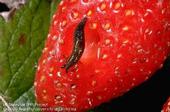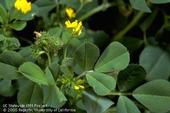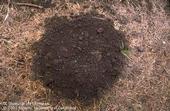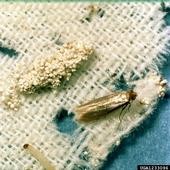
Snails and slugs can be destructive pests in gardens and landscapes when they devour entire seedlings or chew holes in leaves, flowers, fruit, and even the bark of plants.
Manage these pests by getting rid of their hiding places, setting up traps, or planting resistant plants.
For more information about effective ways to manage snails and slugs, read the newly revised Pest Notes: Snails and Slugs by Cheryl Wilen, Area IPM Advisor, San Diego, Orange, and Los Angeles counties; and Mary Louise Flint, Extension Entomologist Emerita, UC Davis and UC IPM.

In mid-March, many people use clover-themed decorations in preparation for St. Patrick's Day. Many gardens and landscaped areas are “decorated” with clovers too, especially with recent rains and mild temperatures in much of California. For some people, clovers are considered weeds, but others enjoy the green color they bring!
Clovers begin to germinate in the fall and continue throughout winter and early spring. Their bright green leaves can blemish the look of lawns and may be unsightly when found in ornamental plantings.
Clovers growing in lawns or landscapes are often a sign of low soil nitrogen, so changing fertilization can help prevent their growth. Read the UC IPM publication

Finding freshly dug mounds of soil in the garden, lawn, or landscape might be a sign of gophers or moles. Their mounds look similar and are frequently confused for each other.
Figure 1 shows a mole mound, which usually is volano-shaped with a circular margin. Figure 2 illustrates a gopher mound and the characteristic crescent shape and plugged opening. Actual mounds may look slightly different from these pictures, but the descriptions are typical of the two vertebrates.
The burrowing activity of both moles and gophers can damage plant roots by dislodging and drying them out. Mounds themselves can be an aesthetic problem in turf and landscapes, but they can also be tripping hazards. Both species eat plant material, and in...
- Author: Anne Schellman
- Author: Karey Windbiel-Rojas
![Larva and adult furniture carpet beetles. [Credit: D-H Choe]](https://ucanr.edu/blogs/UCIPMurbanpests/blogfiles/50653small.jpg)
Pests have popularity contests too. We recently looked at how many visits our popular Pest Notes publication series received in 2017.
If you aren't familiar, the UC IPM Pest Notes series are science-based publications written and reviewed by experts on specific pest or management topics for California. UC IPM has 169 Pest Notes with some being more popular than others.
Here are the 20 most visited titles in 2017:
1- Carpet Beetles
For the third year in a row, carpet beetles was the most viewed of the UC IPM Pest Notes series on our website! This commonly occurring indoor pest can be accidentally brought into your home on cut flowers or through open doors...

Spotting a small moth fluttering around your closet then discovering damaged fabric or other items can be shocking. Upon further inspection, you may even see the silken webs spun by the larvae, or the droppings they leave behind.
Clothes moth larvae attack wool clothing, carpets, rugs, upholstered furniture, furs, and much more. They will even feed on synthetic or cotton blends of fabric if they also contain wool.
Sometimes people mistake clothes moths for pantry pests (food and grain-infesting moths). Clothes moths are small, about ¼ long, and only flutter about the area they have infested, typically around around bedrooms and where...


